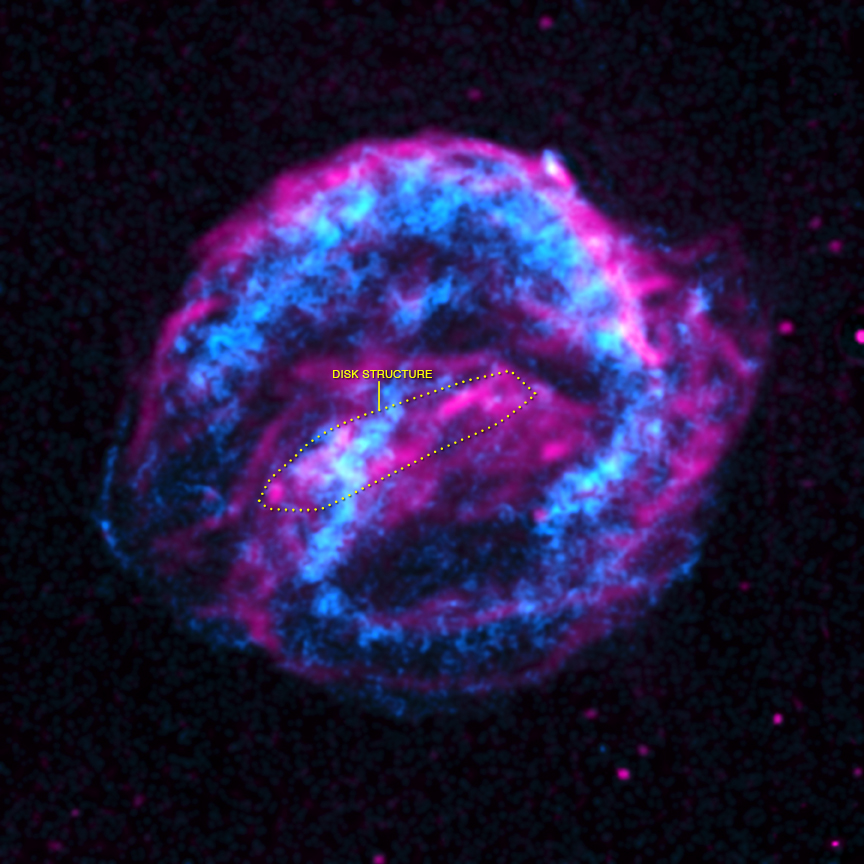
 Credit: X-ray: NASA/CXC/NCSU/M.Burkey et al; Optical: DSS
Credit: X-ray: NASA/CXC/NCSU/M.Burkey et al; Optical: DSS
Another Rung on the Ladder
Astronomers measure the farthest distances in the Universe by comparing known and observed brightnesses of luminous objects. Such objects are often called "standard candles". Examples include pulsating stars whose total light output is proportional to their pulsational period. Hubble used such stars, called Cepheid Variables, to measure the distance to the Great Spiral Nebula in Andromeda to establish it as a majestic galaxy like our own Milky Way. Astronomers have also tried to use other objects, like the brightest star in a galaxy, or brightest globular cluster in a galaxy, to help determine extragalactic distances, with mixed results. The most "standard" of the standard candles are believed to be the so-called "Type Ia" supernovae, which result from a thermonuclear flash destruction of a white dwarf star that's been pushed beyond its Chandrasekhar limit. This dire event could happen if a white dwarf, close to the Chandrasekhar limit, accretes material from a normal star in a binary system. It could also result from the merger of two white dwarf stars in orbit around each other. These alternative models give somewhat different standard brightnesses for these standard candles, which has widespread implications for our studies of the expansion of the Universe itself, and the existence of the mysterious "Dark Energy" which seems to be driving the Universe apart. In the 17th century the astronomer Johannes Kepler (among others) was witness to an astounding event, a Type Ia supernova that exploded in our own Galaxy. But what kind was it? New evidence from the hot X-ray emitting gas left behind by the explosion shows a disk-like distribution of material, as shown in the X-ray image above from the Chandra X-ray observatory (named for Chandrasekhar, by the way). This disk-like structure, and other supporting evidence, is interpreted by astronomers to be the left-over material from a normal donor star. But other evidence shows that "Kepler's Supernova" was a bit unusual compared to other Type Ia supernovae that have been seen since then. So which model is more common? Astronomers are still arguing.
Published: April 8, 2013
<
HEA Dictionary ● Archive
● Search HEAPOW
● Other Languages
● HEAPOW on Facebook
● Download all Images
● Education ● HEAD
>

Each week the HEASARC
brings you new, exciting and beautiful images from X-ray and Gamma ray
astronomy. Check back each week and be sure to check out the HEAPOW archive!
Page Author: Dr. Michael F. Corcoran
Last modified Monday, 26-Feb-2024 17:45:44 EST


